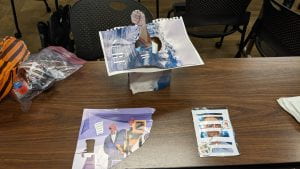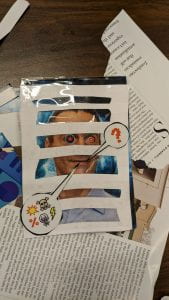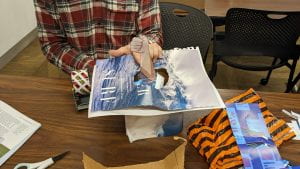Game Rules Description
Materials:
- Magazine / Assortment of images (Required)
- Binding agent (tape, glue, pins, etc.) (Required)
- Separation agent (scissors or tearable materials) (Required)
- Limited drawing resource (single stick of mechanical pencil led) (Required)
- Canvas (Required)
- An abstract prompt (Required)
- As many random and weird materials as you can find
Rules:
“Players, you have 20 minutes to create a piece that you feel best applies to a given abstract prompt. Your material pool stands before you and is shared by all of you. Your time starts NOW!”
Artist’s Statement
I created this game because I wanted to create a collaborative and competitive collaging experience that pushed people out of their comfort zone and forced them to create something different. Players are forced to negotiate how they will share resources and may have to change their designs if something they wanted to use it taken by someone else — The playing field always changes. 20 minutes is also not a huge amount of time so players must make compromises in executing their ideas. This game is intended to produce interesting art whether the players consider themselves ‘artists’ or not. Players are tasked with creating a piece that best fits a given prompt. This prompt should be curated so as not to be too literal. This is to ensure there is no “correct” way to make your art and that the players aren’t all trying to make the same thing (otherwise ‘art skill’ becomes a big factor instead of individual creativity). There should also be a wide array of materials for the players to use including a magazine and some binding agent (glue, tape, pins, etc.), as well as multimodal elements like plastic, cardboard, rubber, or any other unconventional material. This will further push players out of their comfort zone. I was inspired by Hannah Hoch’s photomontage art, appropriating a variety of images from all kinds of context into a new image. As such, I want players to draw from magazines that have a wide variety of imagery to work with. I was also inspired by Kurt Schwitters’ collages that often incorporated a variety of materials and sometimes multiple dimensions. I don’t just want players to cut and paste on paper, but to explore different ways of combining their elements. By providing a wide assortment of materials, players are (by the sheer quantity of different materials) encouraged to branch out. I also wanted to give users a canvas and limited drawing resource because I want players to try to walk down the ‘expected’ path of just drawing and pasting images together but then realize that this method will not be tenable in creating the artwork they image. In doing so, I’m allowing players to “play the game wrong” in order to realize why they should go out of their comfort zone and try something different. Additionally, by giving players little direction, they will need to think for themselves and tap into their creative sides. Ideally, the resulting works should be beautiful and hard to judge because they are so different and creative.
Playtest notes
Prompt: “Trapped”
Materials included (all shared unless specified otherwise)
○ Spring 2022 experience: The Magazine of Northeastern University
○ Scissors
○ Stick of mechanical pencil led (each)
○ Sheet of sketchpad paper (each)
○ Plastic orange and black bag
○ Domino’s Napkins
○ Empty Capri Sun box
○ Tape
○ A LOT of fruit shaped erasers
The playtest went great. Although I provided a sheet of sketch pad paper as a canvas and a stick of led as a drawing utensil, neither of the players used the stick of led at all and both used the sketchpad paper but not as a traditional canvas. One player cut up the canvas to use as a component of their collage and the other cut it up to use as a layer on their 3D artwork. They especially had to negotiate how they’d share the magazine and it’s images. The players created art that stood on their own with no use of the canvas at all. Both pieces had dimension and used a variety of resources available to them. They both approached the prompt differently too. The process is recorded below
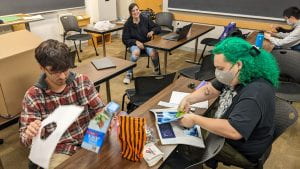
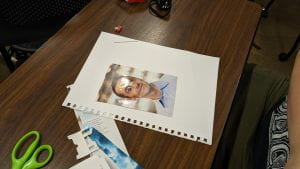
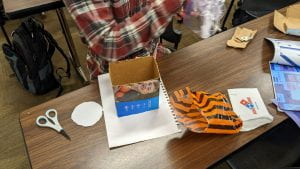
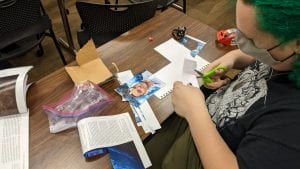
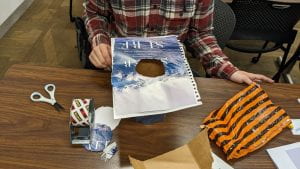
Final Products
